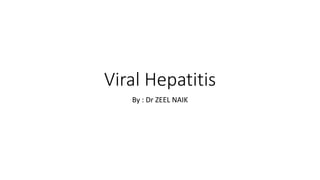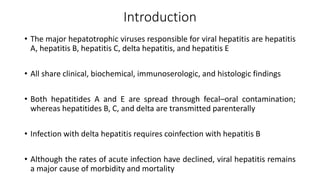The document provides an overview of viral hepatitis, focusing on hepatitis A (HAV) and hepatitis B (HBV). It discusses their transmission routes, epidemiology, clinical manifestations, diagnosis, and treatment strategies, including vaccine options for prevention. The document details the pathophysiology of each virus, highlighting concerns related to chronic infections and complications such as liver disease and hepatocellular carcinoma.



































































































